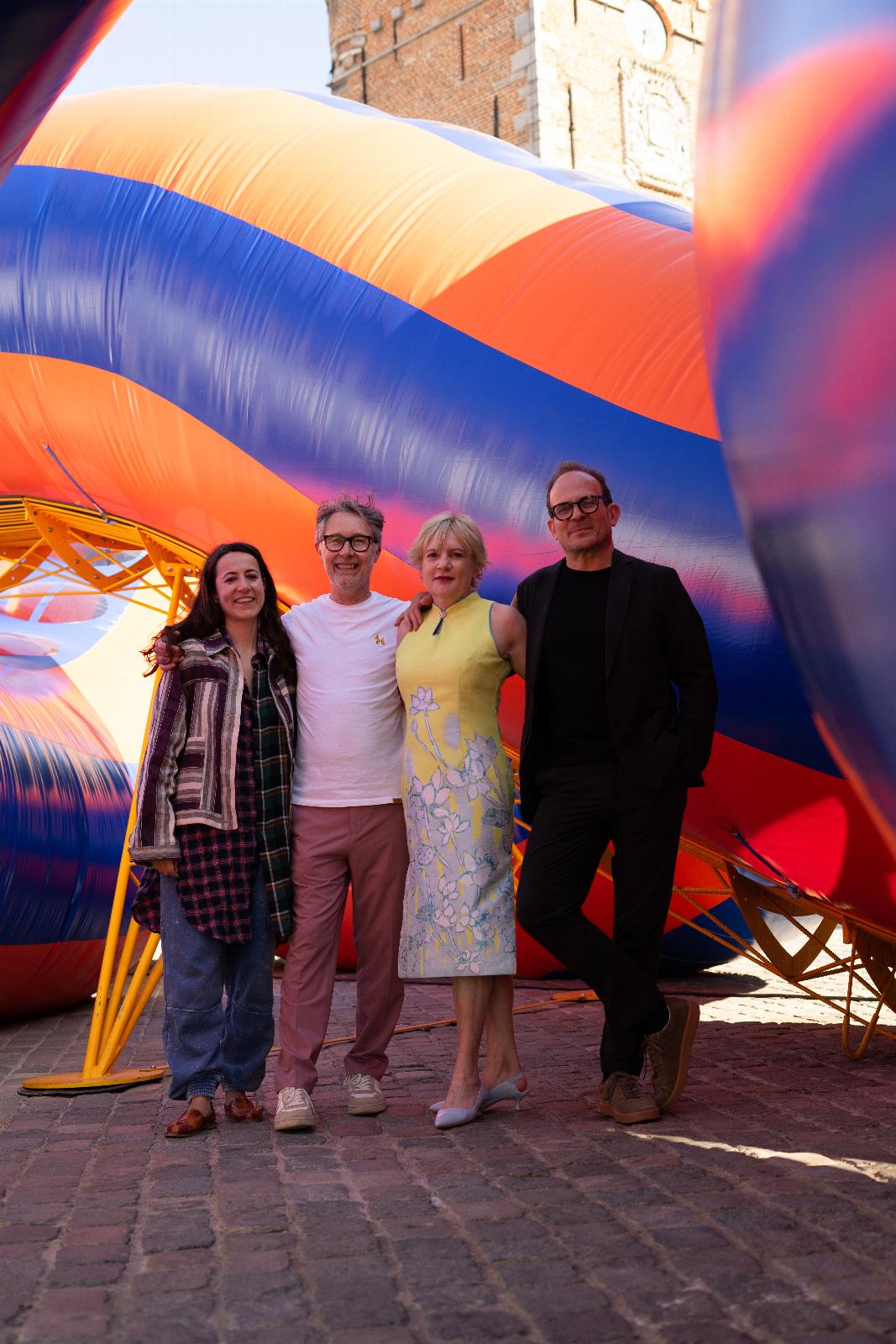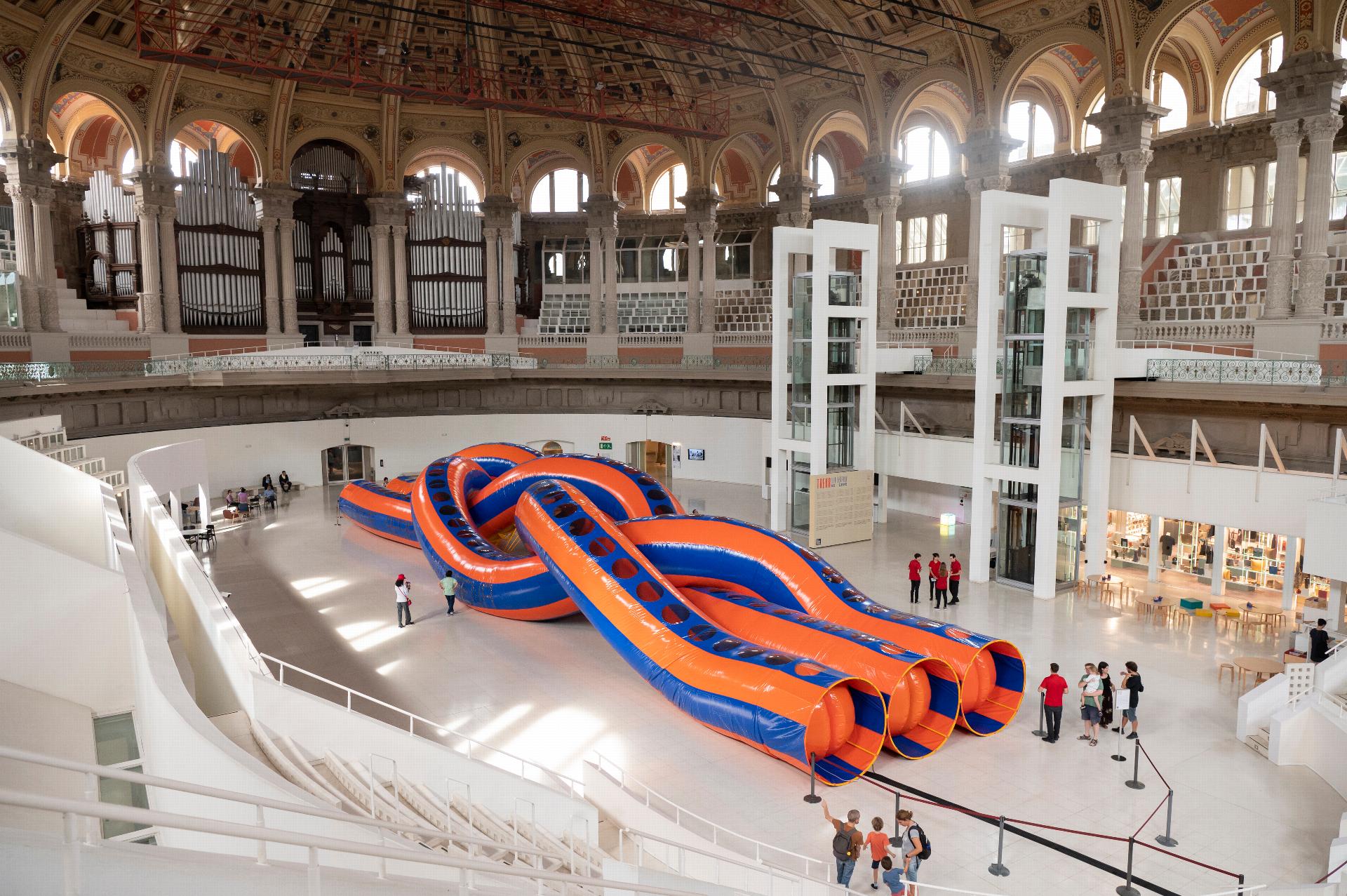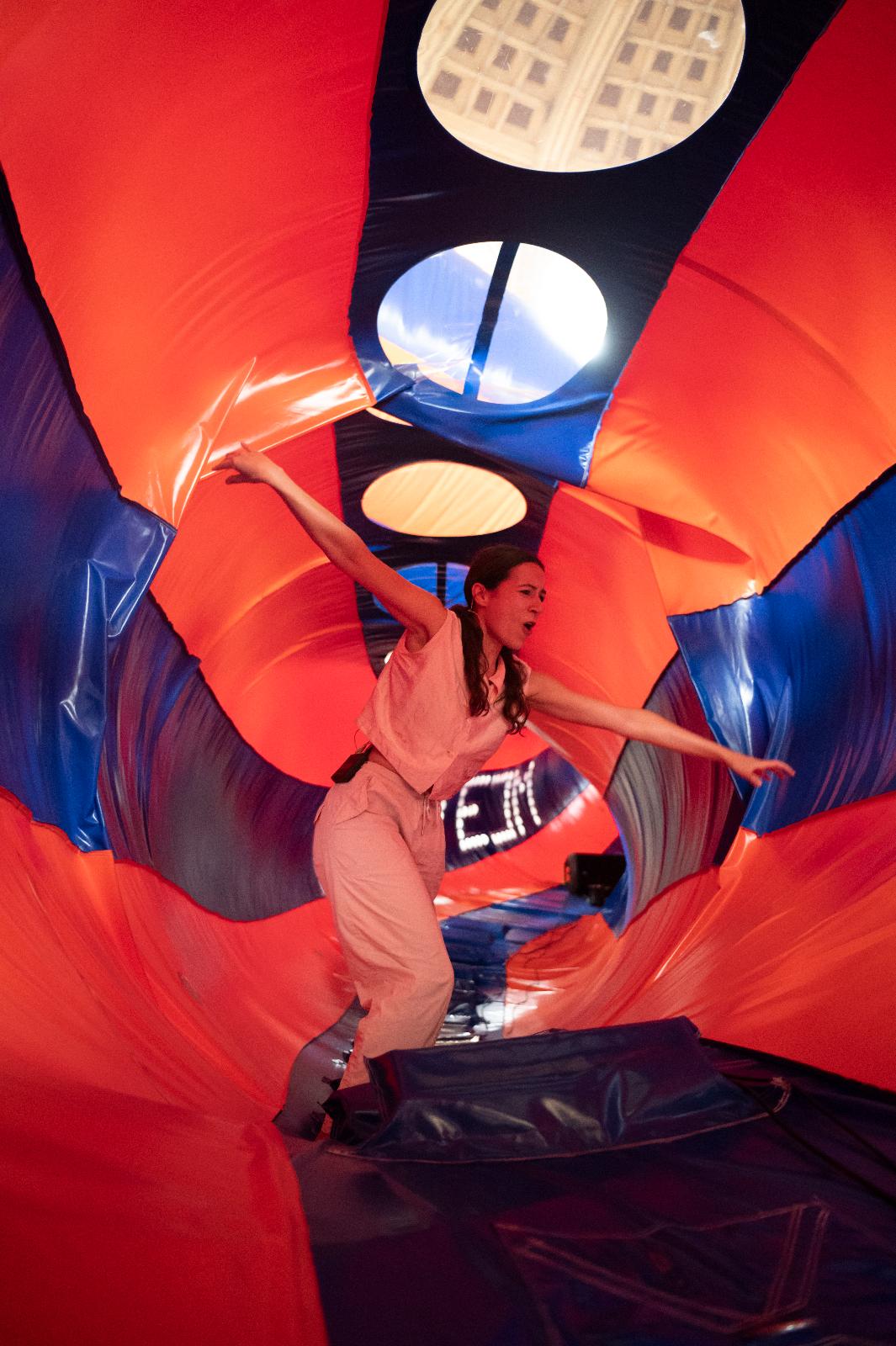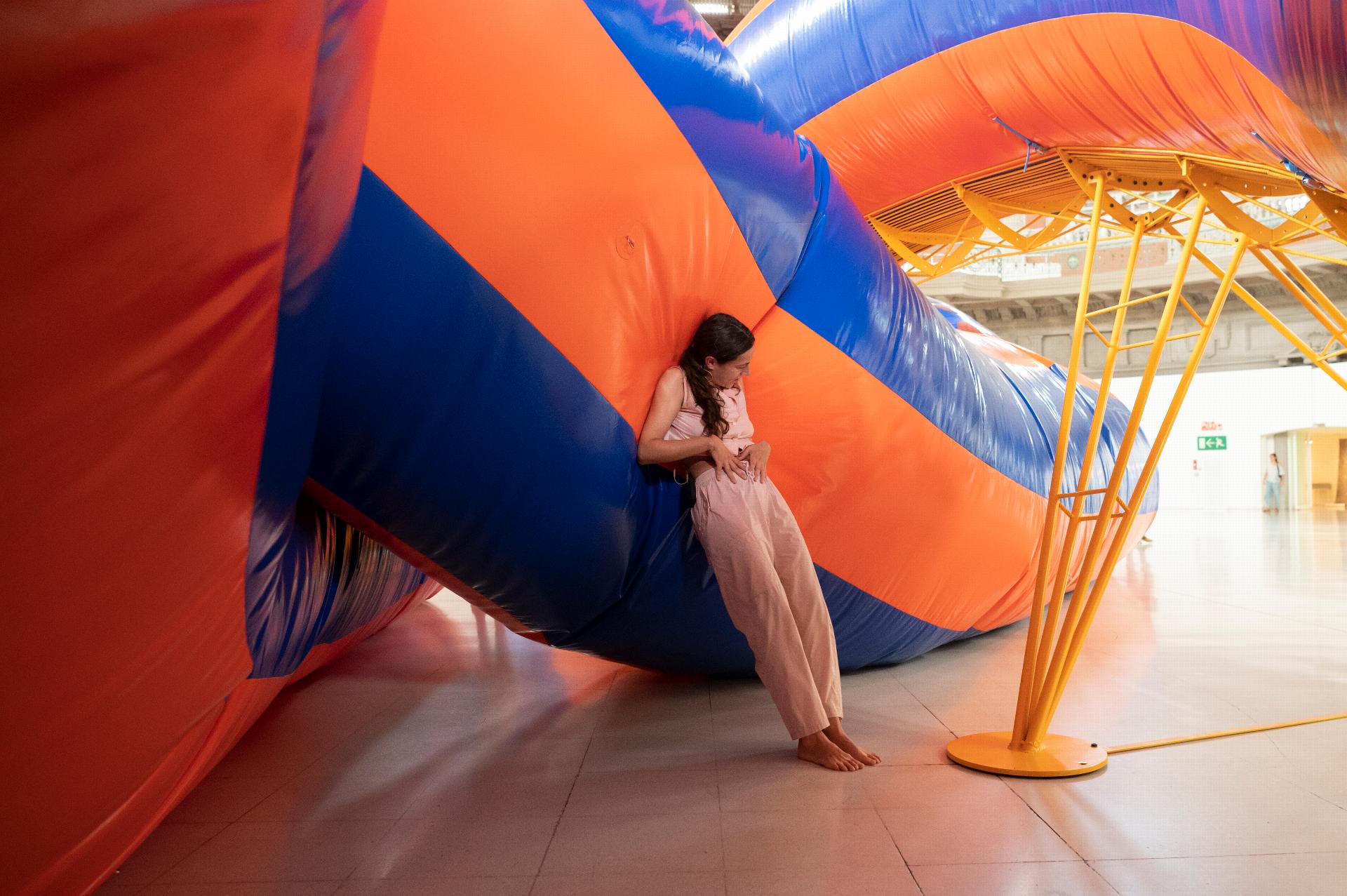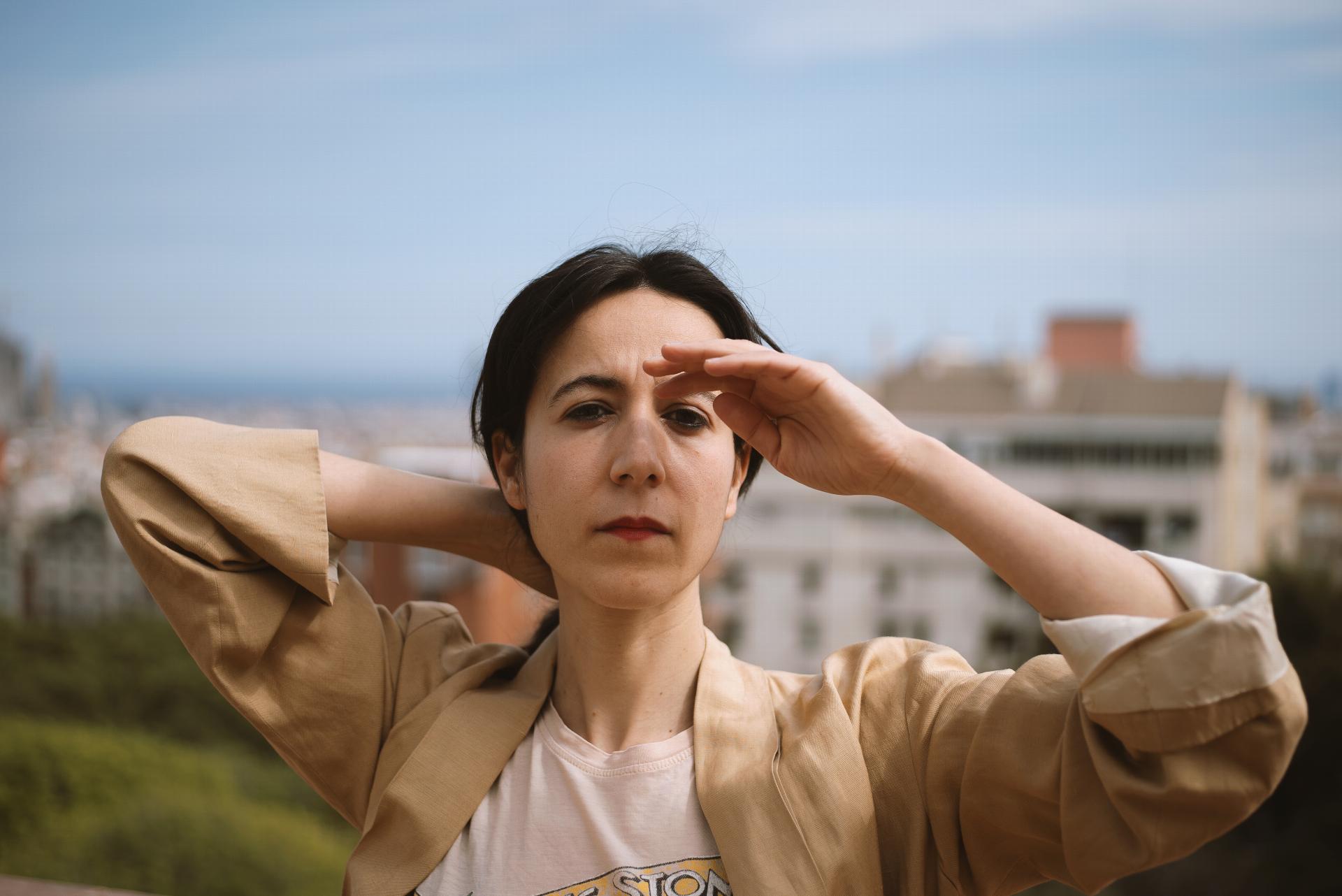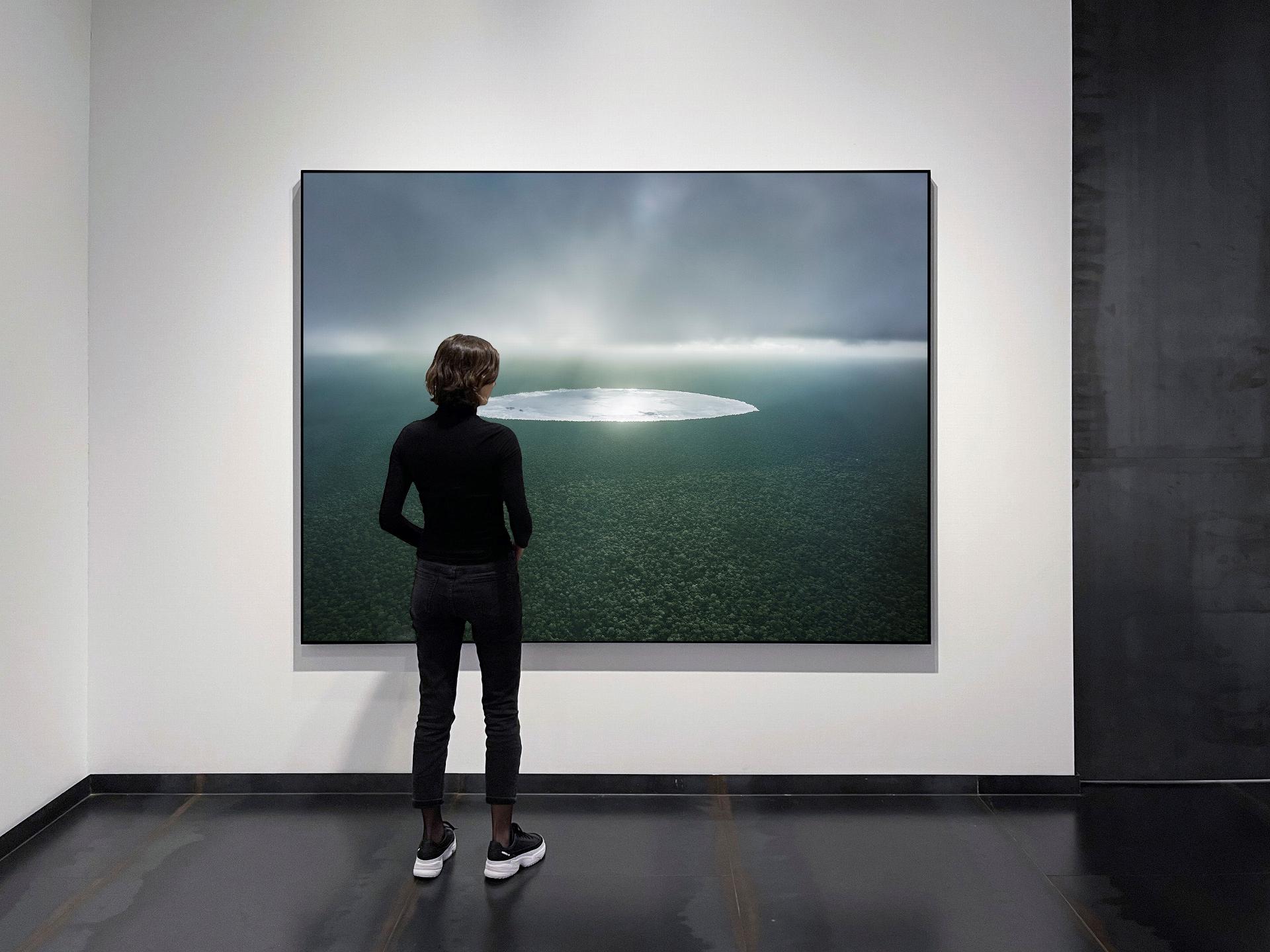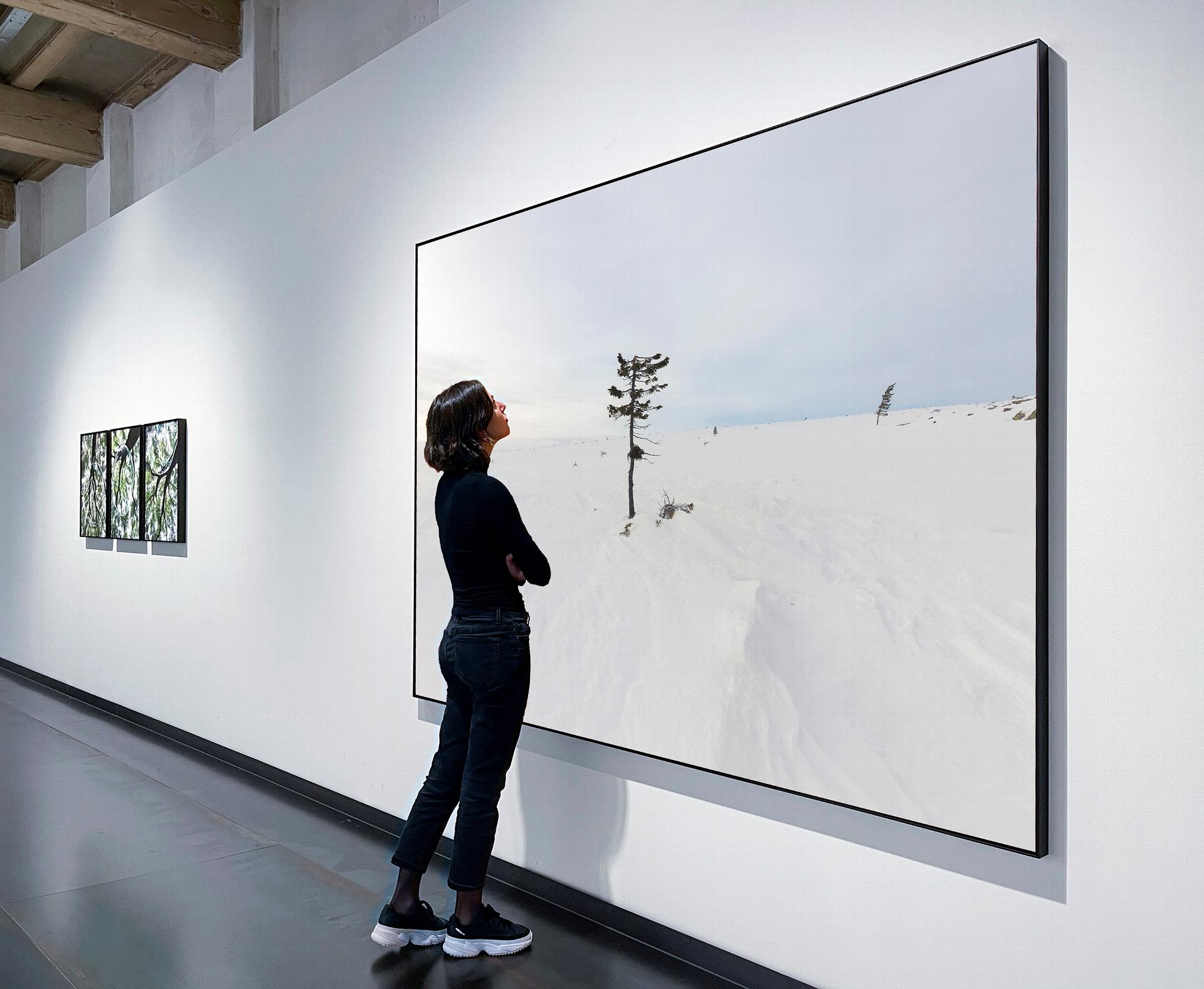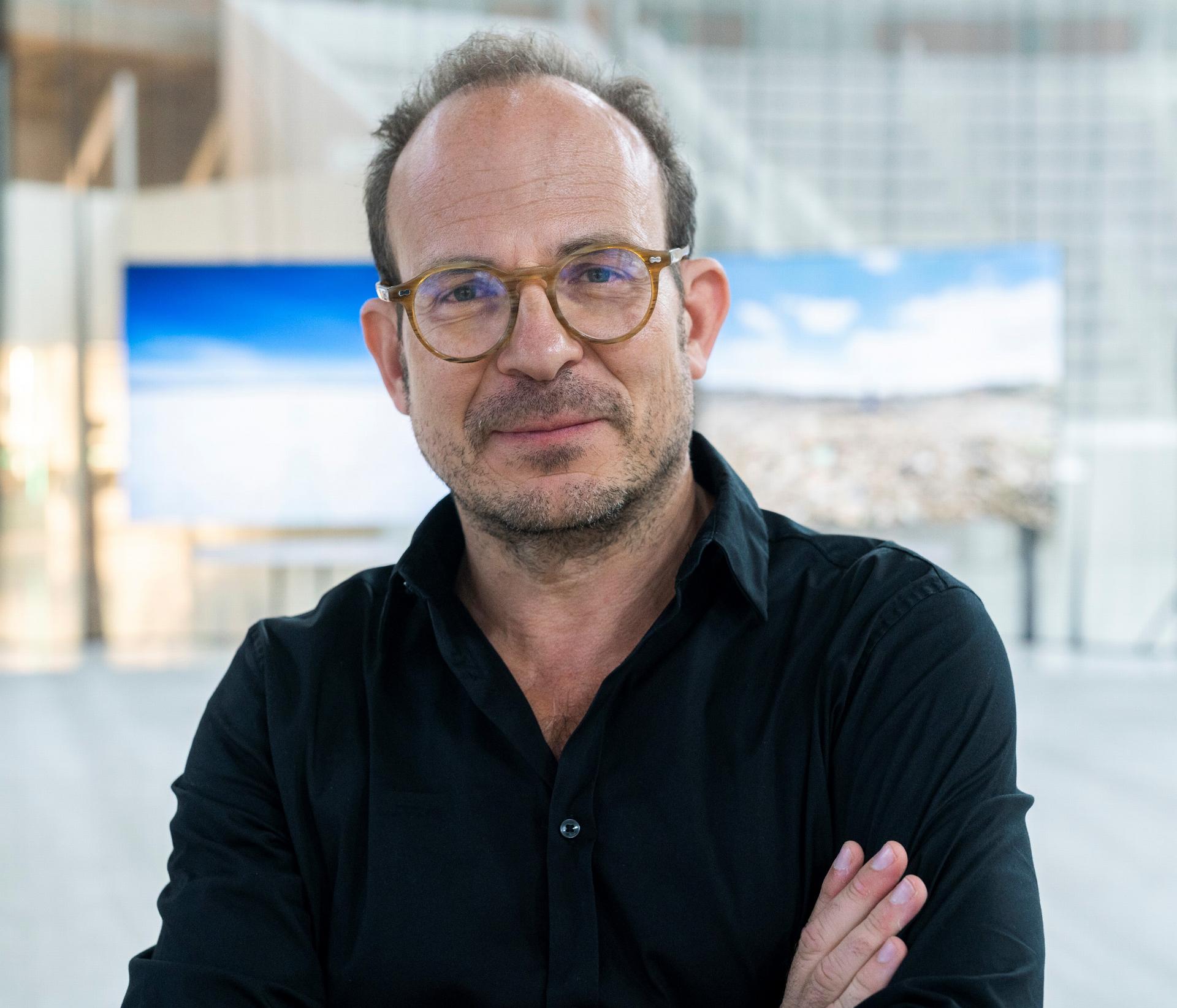On 29 June, the Kortrijk Triennial (Belgium) will open its third edition featuring artworks by twenty-two artists. Until 6 October, these works will make up part be of the urban landscape of the Flemish city and be showcased in some of its most emblematic buildings. Kortrijk City Council and the artistic platform Be-part are responsible for this international event that emphasizes the social aspect of contemporary art and its dialogue with the urban fabric.
Laia Estruch will install her piece Trena in Grote Markt (Great Market), in the city's most central square. The sound sculpture, created by Museu Nacional d'Art de Catalunya (MNAC), spans 35 metres in length, 6.60 metres in width, 5 metres in height, and 2 metres in diameter to offer a distinctive experience that blurs the lines between indoors and outdoors. The sculpture's design is rooted in multiple sources, including the morphology of the plexus (which comes from the Latin word 'trena' and refers to the complex network of vessels and nerves within the human body), the architecture of automotive and athletics circuits, amusement parks, and even the underground channels that transport water and gas beneath our cities. The piece has a performative nature and was premièred in July 2023 in the Sala Oval of the MNAC. The event, encourages visitors from Kortrijk to reexperience and reevaluate their connection with one of the city's most vital and central areas.
Jordi Bernadó will exhibit photographs from the Last & Lost series at the BK6, an old museum located in the historic centre that has since been converted into a creative centre for adolescents. The exhibition is the result of the artist's research into 10 ecosystems across the globe that are facing significant threats to their survival. Through his art, he seeks to preserve these places for future generations, while also highlighting the pressing ecological and philosophical challenges of our times. Every image depicts a reality that either struggles to endure or reaffirms its survival. Some images denounce, while others evoke emotions or act as metaphors that express a desire for change. His work is presented in a dialogue with works by the American-Cuban visual artist Felix Gonzalez-Torres, who died in 1996, and the Belgian avant-garde artist and architect René Heyvaert.
The curators of this year's edition of the Triennial are Patrick Ronse, director of the contemporary art platform Be-Part, and Hilde Teerlinck, director of the Han Nefkens Foundation. Their chosen motto, 'After Paradise,' highlights the stark contrast between the social harmony and material abundance of a lost paradise with the present reality of resource scarcity, social tensions, and a highly polluted environment. After Paradise aims to foster positive dialogue centered around individual responsibility and empowerment, presenting works that inspire reflection and action, as explained by its curators.
The participation of Laia Estruch and Jordi Bernadó in the Kortrijk Triennial is supported by the Institut Ramon Llull, which also promoted the programming of Catalan artists in the two previous editions.
Laia Estruch (born 1981 in Barcelona) holds a degree in Fine Arts from the University of Barcelona, and she is currently finishing her final year of undergraduate studies at Cooper Union University in New York (2010). Her achievements include winning the 'Ciutat de Barcelona 2021' award, the 'Cerveses Alhambra d'Art Emergent, ARCOMadrid 2022' award, and the 2019 Galeries Award from Núvol magazine. The artist's research is anchored in the elements of voice and body, blending sculpture and action in her artistic practice. She views the voice as an extension of the body, synthesizing language, speech, gender, and social structure into her work.
Her latest works have been exhibited in PUBLICS (2022) Helsinki, Arco Fair in Madrid (2022), La Panera Art Centre (2022) in Lleida, Thyssen Bornemisza TBA21 collection at the C3a Centre for Contemporary Creation of Andalucía, Córdoba (2022), Sandretto Foundation, Madrid (2022), Ehrhardt-Flórez Gallery, Madrid (2022), Cerezales Antonino y Cinia Foundation, León (2022), Azkuna Zentroa, Bilbao (2022), Hauser and Wirth Menorca (2023), TEA Tenerife Espacio de las Artes (2023), MNAC Museu Nacional d'Art de Catalunya in Barcelona (2023), Municipal Gallery of Porto de Portugal (2023), Concomitantes - Aguas Vivas in Cantabria (2023-24) and PATIO ZONAMACO Mexico (2024),
Jordi Bernadó (born in Lleida in 1966) views photography as a means of acquiring knowledge. His meticulous approach to decoding his surroundings has resulted in an extensive, intricate body of work that is deeply personal. In his kaleidoscopic work, he plays with reality and highlights blind spots, revealing otherwise unnoticed elements. His creations tackle diverse topics such as individual and collective identities, ways of living, and architecture.
He won the Ministry of Culture Award for Best Book of the Year 2002 and the PHotoESPAÑA Prize 2002 in the category of Best Photography Book with Very Very Bad News (Ed. Actar, 2002), and finalist in the Prix du Livre d 'Auteur 2010 at Les Rencontres d'Arles Internationales de la Photographie with the book Welcome to Espaiñ (Ed. Actar, 2009. He also won the Fotopres Scholarship and the Endesa X Scholarship.


